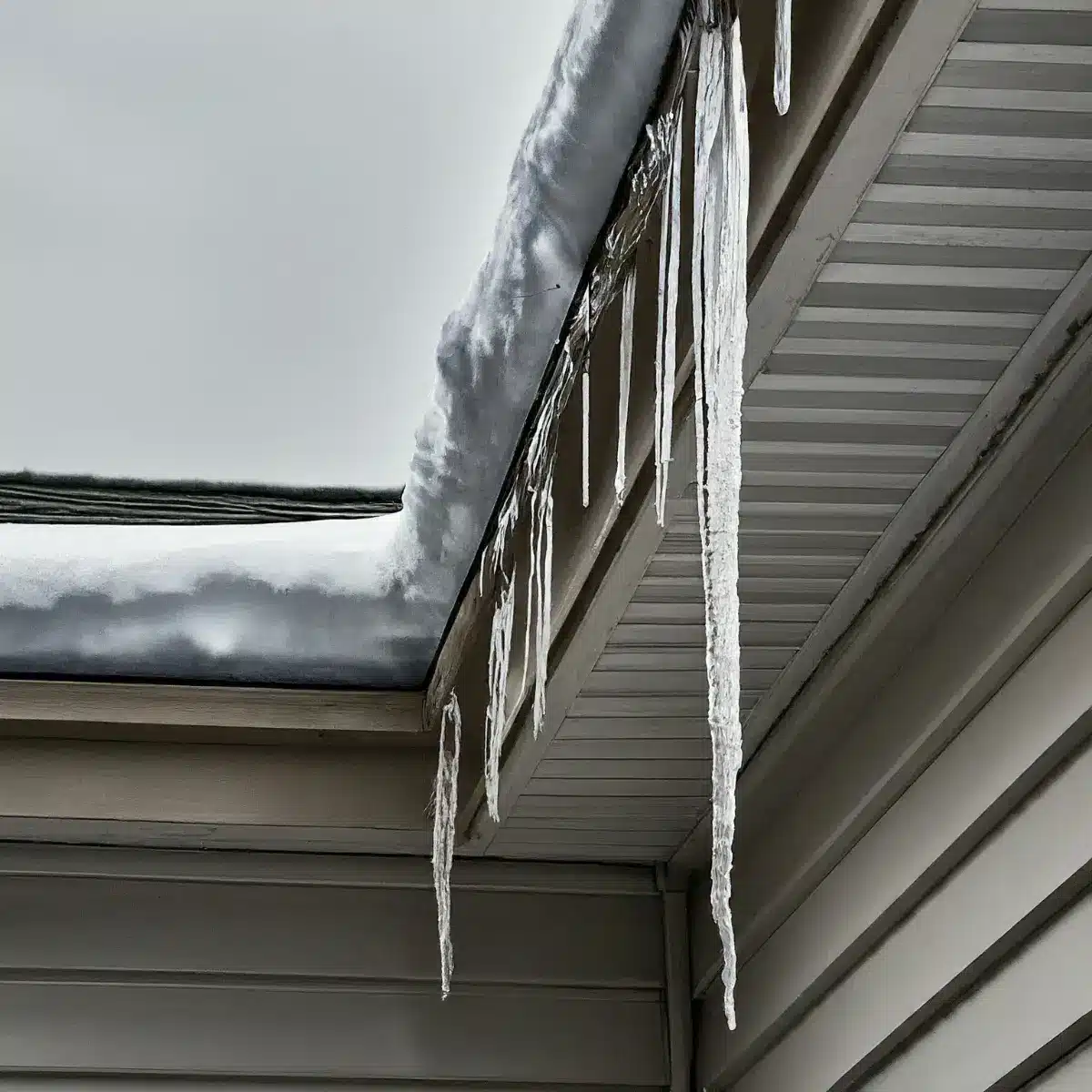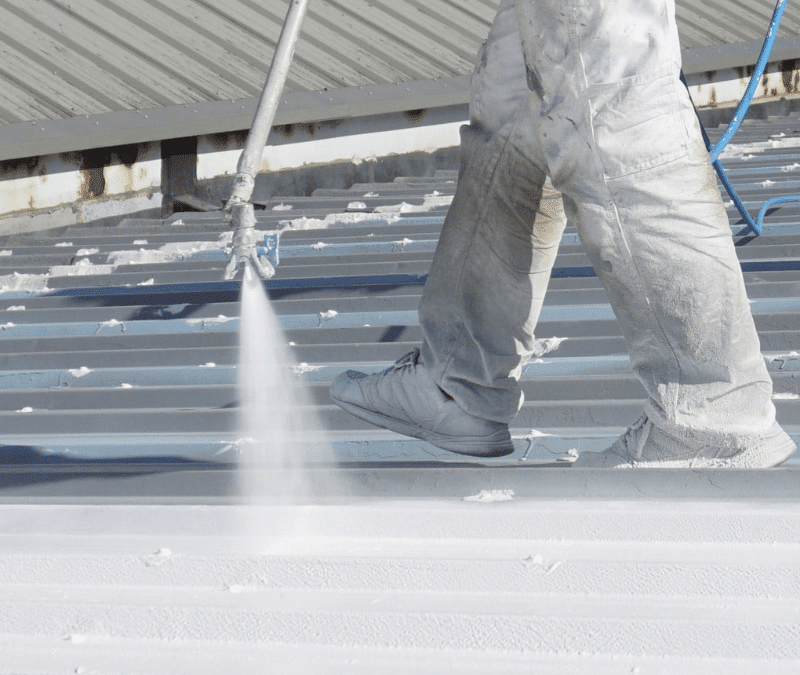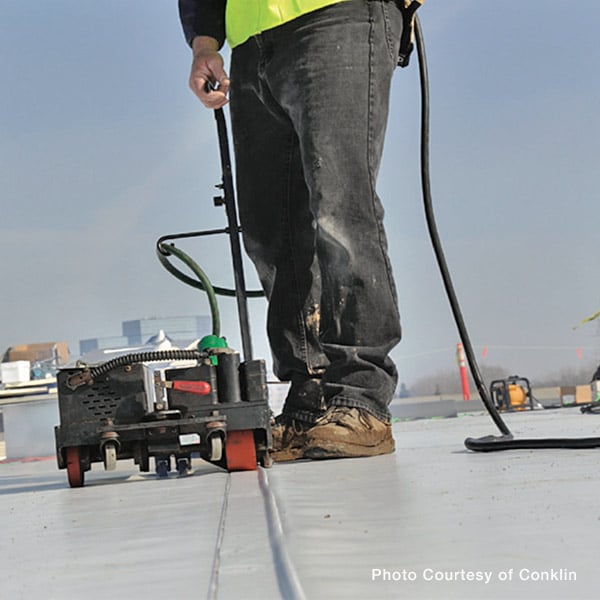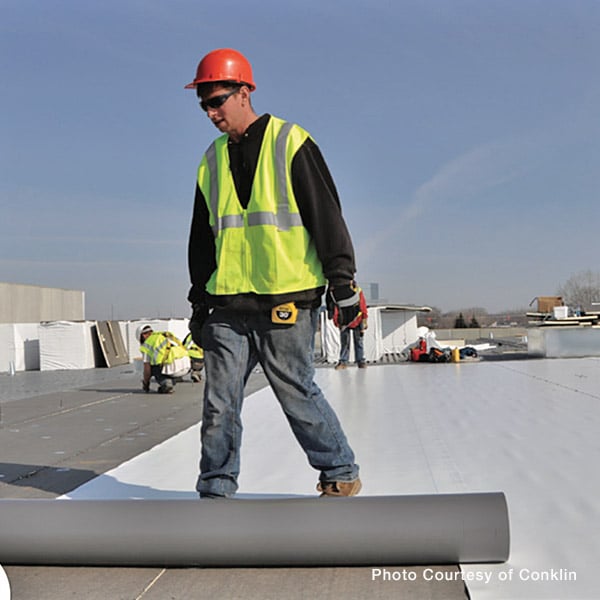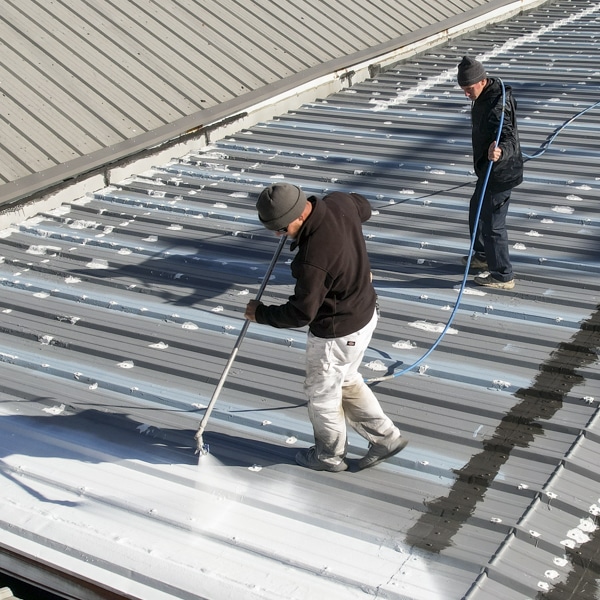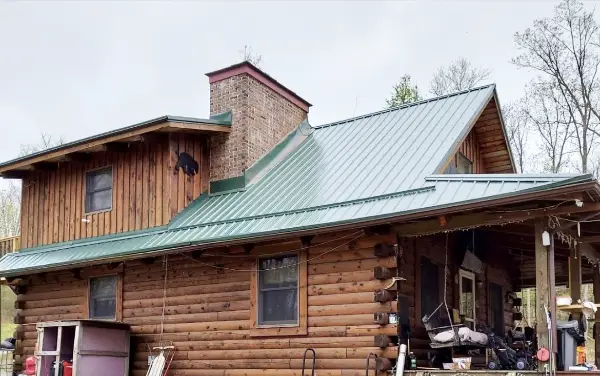What is are Ice Dams?
As winter descends upon us, homeowners often encounter a common yet potentially damaging phenomenon known as ice dams. An ice dam is a ridge of ice that forms along the lower edge of a roof, typically at eaves or gutters. It occurs when heat from the interior of a home escapes into the attic space, warming the roof’s surface and causing snow to melt. As the melted snow runs down the roof, it refreezes when it reaches the colder eaves, forming a barrier of ice. Over time, this ice buildup can trap water behind it, leading to pooling and potential leaks into the home. However, they don’t always pose a threat to your roof.
What Causes Them?
They form due to various factors, each playing a role in their development. Inadequate insulation is a common culprit, as poor insulation in the attic allows heat from the home’s interior to escape into the attic space, warming the roof’s surface and causing snow to melt. Similarly, improper ventilation exacerbates the issue by preventing excess heat and moisture from escaping, leading to temperature imbalances on the roof’s surface. Variations in roof temperatures due to sunlight exposure, roof orientation, and other factors also contribute to the problem, causing snow to melt unevenly and facilitate ice dam formation.
Additionally, clogged gutters further exacerbate the situation by impeding proper drainage, allowing water to accumulate and freeze along the roof’s edge. Finally, heavy snowfall followed by freezing temperatures creates ideal conditions for ice dam formation, particularly in regions with cold winters, compounding the problem further.
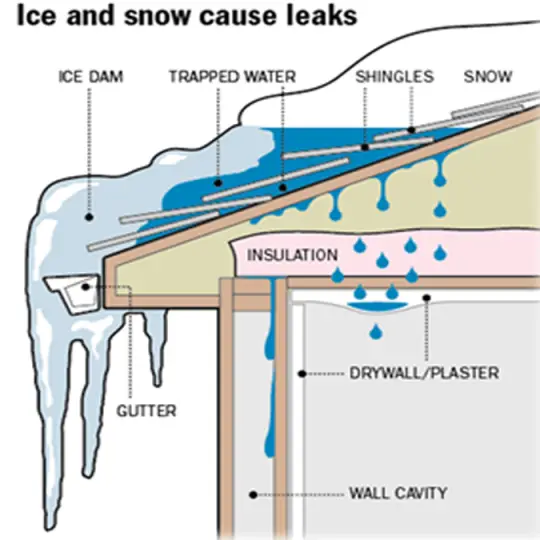
Should I Remove Ice Dams?
They can have several detrimental effects on most homes, including:
1. Roof Damage: The weight of ice dams can damage roofing materials, leading to shingle deterioration, sagging, and structural issues.
2. Water Leaks: Ice dams trap melting snow and water behind them, causing water to seep under shingles and into the home’s interior, leading to ceiling stains, wall damage, and mold growth.
3. Gutter Damage: Ice dams can pull gutters away from the roofline, causing them to bend, crack, or detach from the home.
However, these effects don’t impact all residential roofs. For example, Ice Dams aren’t detrimental to metal roofs. Therefore, its important to first know whether Ice Dams on your roof are causing potential harm or not.
They Aren’t Always Bad!
Although Ice Dams can be detrimental to your roof, this isn’t the case for metal roofs. Aside from the fact that ice dams don’t often form on metal roofs, when they do it can even be advantageous. When it comes to metal roofs, ice dams are easy to work around. Furthermore, on metal roofs they can also provide extra insulation. Heat cables will even be removed on some occasions to maintain the ice dams for their added insulation. According to experts, customers rarely ask for those heat cables to be re-installed in these scenarios.
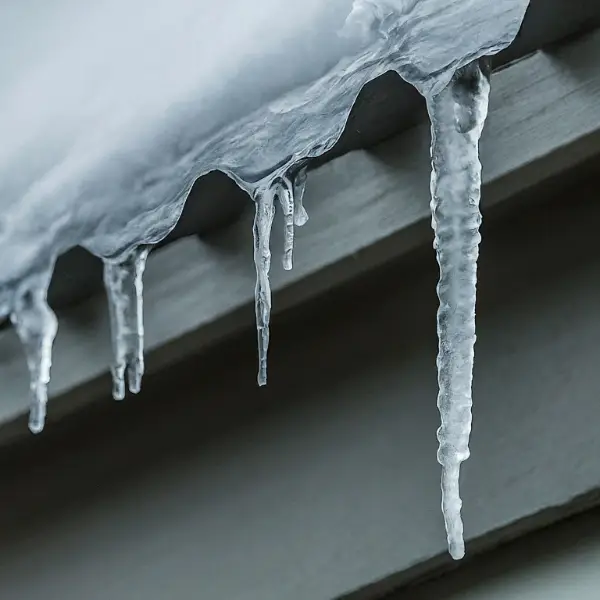
5 Best Ways to Prevent and Remove Ice Dams and Protect Your Roof
In the scenario that your roof isn’t a metal roof, ice dams on your roof can pose a significant threat to its integrity during winter months. These ridges of ice that form along the edge of your roof can lead to water damage, leaks, and even structural issues if left unaddressed. If you’re wondering how to remove ice dams, or how to prevent ice dams, then you are in luck. Fortunately, there are several effective methods for ice dam removal and ice dam prevention.
1. Use Heat Cables:
Heat cables, also known as heat tape or roof de-icing cables, are a popular solution for preventing and removing ice dams. These cables are installed along the roof’s edge and are designed to generate heat, melting snow and ice before it has a chance to form into dams. Heat cables are typically controlled by a thermostat and can be activated when snow begins to accumulate on the roof. While heat cables can effectively prevent ice dams, they may not be as effective in removing existing ice dams once they have formed.
2. Roof Raking:
Roof raking is a simple and effective method for removing snow and preventing ice dams from forming. Using a roof rake with an extended handle, homeowners can safely remove snow from the roof’s surface while standing on the ground. By keeping the roof clear of snow, roof raking helps to minimize the risk of ice dams forming along the roof’s edge. It’s important to use a roof rake specifically designed for this purpose to avoid damaging roofing materials.
3. Chemical Deicers:
Chemical deicers, such as calcium chloride or sodium chloride, can be used to melt existing ice dams and prevent further buildup. These deicers are typically applied directly to the ice dam and work by lowering the freezing point of the ice, causing it to melt. However, it’s essential to use these products carefully to avoid damage to roofing materials, landscaping, and surrounding vegetation. Additionally, chemical deicers may not be as effective in extremely cold temperatures.
4. Professional Ice Dam Removal:
For severe ice dams or situations where other methods have been ineffective, professional ice dam removal may be necessary. Professional roofing contractors have the expertise and specialized equipment to safely remove ice dams without causing damage to the roof. Steamers or hot water pressure washers are commonly used to melt ice dams and clear away snow and ice from the roof’s surface. While professional ice dam removal may be more costly than DIY methods, it can provide peace of mind and ensure the safety of your roof. In Addition to this, if Ice Dams are proving to be a regular issue, professional Ice Dam Removal may provide you with a more permanent solution.
5. Improve Insulation and Ventilation:
Addressing underlying issues such as inadequate insulation and ventilation in the attic can help prevent ice dams from forming in the first place. Proper insulation helps to maintain consistent temperatures on the roof’s surface, preventing snow from melting and refreezing along the roof’s edge. Adequate ventilation allows warm air to escape from the attic, reducing the risk of heat buildup and ice dam formation. By improving insulation and ventilation, homeowners can effectively mitigate the risk of ice dams and protect their roof from winter damage.
Overall, Ice dams can cause significant damage to your roof if left unchecked, but there are several effective methods for removing them and preventing future formation. Whether using heat cables, roof raking, chemical deicers, professional ice dam removal, or improving insulation and ventilation, homeowners have options for safeguarding their roof from winter’s icy grip. By taking proactive measures to address ice dams, homeowners can protect their investment and ensure the long-term integrity of their roof.
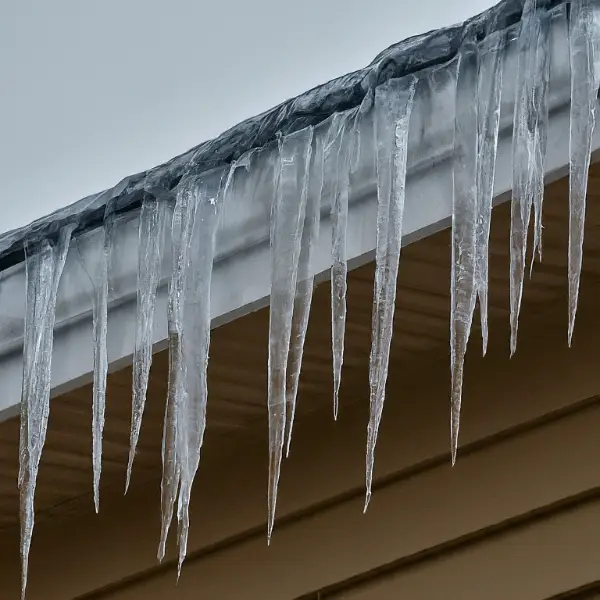
When Should I Call a Professional for Ice Dam Removal?
It’s advisable to call a professional to remove ice dams from your roof if you’re unable to address the issue safely and effectively yourself or if the ice dams are causing significant damage or posing a safety risk. Here are some situations in which it’s best to seek professional assistance:
1. Large or Stubborn Ice Dams:
If the ice dams on your roof are particularly large, thick, or stubborn, attempting Ice Dam removal by yourself can be challenging and potentially dangerous. A professional roofing contractor will have the necessary equipment and expertise to remove large or stubborn ice dams safely and effectively.
2. Height or Accessibility Concerns:
If your roof is steeply pitched, has multiple levels, or is otherwise difficult to access, it may not be safe for you to attempt ice dam removal yourself. A professional roofer will have the proper safety equipment and training to work on steep or inaccessible roofs safely.
3. Risk of Damage:
Attempting ice dam removal yourself using sharp tools, excessive force, or improper techniques can damage your roof or gutters, leading to costly repairs. A professional roofer will have the skills and experience to remove ice dams without causing damage to your roof or gutters.
4. Interior Water Damage:
If ice dams are causing water to leak into your home, resulting in interior water damage to ceilings, walls, or insulation, it’s essential to address the issue promptly. A professional roofer can assess the extent of the damage and take appropriate measures to perform ice dam removal and prevent further water infiltration.
5. Safety Concerns:
Climbing onto your roof during winter conditions to remove ice dams can be hazardous, especially if the roof is slippery or covered in snow and ice. Hiring a professional roofer to complete ice dam removal ensures your safety and reduces the risk of slips, falls, or other accidents.
Overall, if you’re unsure about your ability to attempt ice dam removal safely and effectively from your roof or if the ice dams are causing significant damage or safety concerns, it’s best to call a professional roofing contractor for assistance. They will have the expertise, equipment, and experience to address the issue safely and prevent further damage to your roof and home.
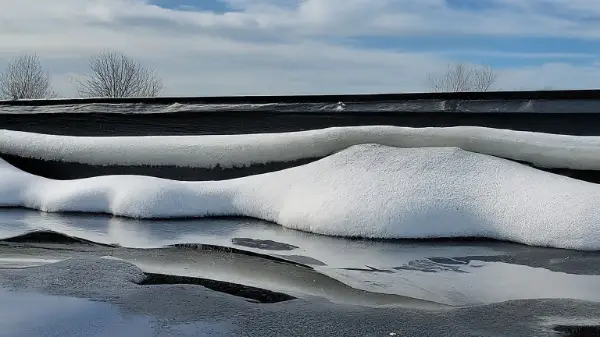
Lester’s Carpentry – Ice Dam Prevention, Ice Dam Removal, and Roof Restoration
Lester’s Carpentry is your trusted partner in combating the challenges of ice dams and ensuring the longevity and integrity of your roof. With our expertise and comprehensive services, we provide tailored solutions for ice dam prevention, ice dam removal, and roof restoration, helping you protect your home and investment.
Ice Dam Prevention:
Preventing ice dams starts with proper insulation, ventilation, and maintenance of your roof. At Lester’s Carpentry, we offer expert insulation and ventilation services to ensure your attic remains properly insulated and ventilated, minimizing heat loss and reducing the risk of ice dam formation. Our team conducts thorough inspections to identify potential problem areas and recommends solutions to enhance the energy efficiency and performance of your roof. By addressing issues such as inadequate insulation, improper ventilation, and clogged gutters, we help prevent ice dams from forming and protect your home from potential water damage.
Ice Dam Removal:
If Ice Dams are posing a threat to your roof, prompt and professional removal is essential to prevent further damage to your roof and home. Lester’s Carpentry offers expert ice dam removal services using safe and effective techniques to clear ice dams without causing damage to your roof or gutters. Our experienced team utilizes specialized equipment and methods to safely remove ice dams and restore proper drainage, protecting your home from leaks, water damage, and structural issues. Whether you’re dealing with small ice dams or large, stubborn formations, you can trust Lester’s Carpentry to provide efficient and reliable ice dam removal solutions tailored to your needs.
Roof Restoration:
If your roof has been damaged by ice dams or other factors, Lester’s Carpentry offers comprehensive roof restoration services to repair, reinforce, and rejuvenate your roof. Our skilled craftsmen are experienced in repairing damaged shingles, flashing, and roofing materials, restoring the integrity and functionality of your roof. We use high-quality materials and proven techniques to ensure long-lasting results and protect your home from future damage. Whether you need minor repairs or a complete roof restoration, Lester’s Carpentry has the expertise and resources to deliver exceptional outcomes and restore your peace of mind.
Contact
Lester’s Carpentry is committed to helping you protect your home from the damaging effects of ice dams and ensure the longevity and performance of your roof. With our comprehensive services for ice dam prevention, ice dam removal, and roof restoration, we provide tailored solutions to address your specific needs and safeguard your home against water damage, leaks, and structural issues. Contact Lester’s Carpentry to be your partner in maintaining a safe, secure, and resilient roof for years to come.

